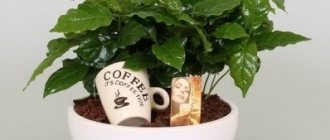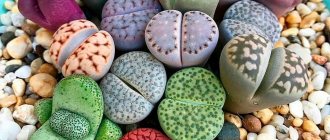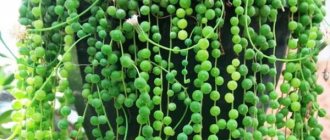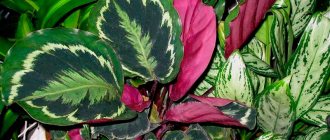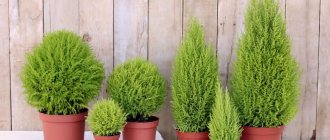Author: Elena N. Category: Houseplants Published: February 01, 2019Last edits: January 11, 2021
- The myrtle has dried up
- Properties of myrtle
- Common myrtle (Myrtus communis)
plant (lat. Myrtus) belongs to the genus of evergreen woody plants of the Myrtaceae family, the flowers of which contain essential oil. The natural habitats of myrtle are the Mediterranean, the Azores and the north of the African continent. It is no coincidence that the name of the plant is consonant with the Greek word “myrrh”, which means “balm, liquid incense”, because it is as a cult attribute that myrtle essential oil has long been used in temples of various concessions. Legend says that Adam, expelled from Eden, brought the myrtle flower with him to Earth as a memory of the lost paradise. Many peoples have many myths, beliefs, traditions, rituals and signs associated with this plant. The myrtle tree has long been considered a symbol of glory, peace and hope. Our ancestors had myrtle flowers not only for cult purposes, but also for medical and cosmetic purposes, and some myrtle preparations are still popular today. But for plant lovers, a blooming and fragrant myrtle is an object of admiration and a source of aesthetic pleasure, especially since home myrtle is undemanding in care, and those who know how to care for myrtle can easily achieve the optimal shape for a plant that will decorate your home and help preserve To your health.
Planting and caring for myrtle
- Flowering: June-July.
- Lighting: bright sunlight until noon, then bright diffused light (southern, western and eastern windows).
- Temperature: in summer – normal for residential premises, in winter – 5-10 ˚C.
- Watering: in summer - frequent and plentiful; in cool seasons, watering is reduced.
- Humidity: high. Daily spraying of leaves is recommended, especially in hot weather.
- Feeding: from March to August once a week with complex mineral fertilizers.
- Dormant period: winter; in cool conditions - up to three months, in normal conditions - a month and a half.
- Replanting: young plants - annually, adults as needed.
- Pruning: after flowering or early spring.
- Reproduction: cuttings, less often seeds.
- Pests: scale insects, aphids, spider mites, whiteflies, mealybugs.
- Diseases: root rot.
Read more about growing myrtle below.
Botanical description
Myrtle, which according to various sources has from forty to one hundred species, in its natural habitat can grow up to three meters in height, and indoor myrtle, under the most favorable conditions, reaches only a meter. Usually myrtle at home is a tree with a round crown 30-60 cm tall. Small leathery, as if polished, leaves of myrtle are located on the shoots sparsely and oppositely on short petioles, they have an elongated shape, the tops of the leaves are pointed. Flowers, simple or double, are either single or collected in a raceme. The fruit is a nut or drupe berry.
An interesting fact is that myrtaceae include such valuable plants for humanity as tea tree, eucalyptus, and clove tree.
Description and history of origin
Myrtle is an evergreen plant with pleasantly scented flowers. It has medicinal properties and is used in the preparation of perfumes. In autumn, this tree bears fruits - dark blue berries on the branches. Some species have white or yellow fruits.
The homeland of the plant is the Mediterranean. The myrtle flower grows in Italy, Egypt, France, Greece, and Spain. Many legends and traditions are associated with this ancient plant. For example, Queen Victoria planted a myrtle bush with her own hands, and for each wedding of her daughters and granddaughters she wove a branch from the tree into a wedding wreath. This tradition has survived to this day.
In the photo, myrtle looks like a beautiful and as unusual plant as in life. Therefore, it is often the choice when buying indoor plants.
Growing myrtle from seeds
How to propagate myrtle by seeds at home? At the beginning of spring, myrtle seeds are sown on the surface of a substrate consisting of equal parts of sand and peat, in a container 7-10 cm deep, sprinkled on top with a layer of the same substrate 3-5 mm thick and, covered with glass, kept at a temperature of about 20 ºC, ventilating and moistening the crops, as well as removing condensation from the glass.
- How to care for ficus
Shoots appear in a week or two, and when the seedlings grow 2-3 true leaves, they are planted in the same substrate in individual pots so that the root collar remains above the soil surface. A month after picking, the seedlings are fed with nitrogen fertilizer of weak consistency.
However, amateur breeders should know that myrtle grown from seeds:
- will bloom no earlier than in 4-5 years;
- is unlikely to retain varietal characteristics.
In addition, the germination of myrtle seeds sharply decreases after just a year of storage, and obtaining them is problematic, since this will require artificial pollination of the plant.
Growing problems
There are practically no difficulties when growing myrtle. Here are some tips to help protect your tree. Firstly, there is no need to replant adult myrtle every year; you just need to replace the top layer of soil every year and add fertilizer.
Secondly, if your myrtle leaves are falling off, most likely the plant is not getting enough light or the room is too hot. Lack of light can also cause leaves to become shredded and pale. In this case, the crop needs to be moved closer to the light source. However, it should be borne in mind that with excess lighting, the leaves begin to turn yellow, fade and curl.
The video shows how to properly care for myrtle at home.
Caring for myrtle at home
Growing conditions
Caring for myrtle at home includes watering, pruning and feeding the plant, as well as creating optimal or at least necessary conditions for it. The myrtle houseplant prefers southern, western and eastern window sills and is tolerant of drafts, temperature changes and direct sunlight. Moreover, if there is no sun, the myrtle will not bloom. In summer, myrtle prefers life in the fresh air; in winter, the plant needs coolness - 5-10 degrees Celsius, and the best place for it would be a glazed, unheated balcony.
In the warm season, myrtle should be watered Insufficient or infrequent watering can cause the plant to drop its leaves. With the onset of cold weather, watering is reduced, but if the plant spends the winter indoors with heating devices running, it will have to be watered just as abundantly as in the summer.
In addition, there will be a need to spray the leaves of the plant with water at least once a day, since myrtle needs high air humidity, and you need to remember this in winter, if the temperature in the room with myrtle is above 15 ºC, and in summer. Water for water procedures and irrigation must be settled or passed through a filter.
Once every week or two from March to August, myrtle needs fertilizing. If you are growing a bonsai from myrtle or you are not interested in its flowering, then feed the plant with a complex fertilizer for ornamental foliage plants, but if you want to see myrtle bloom, then apply fertilizer for flowering plants.
- Iresine – care, photos, types
Myrtle has a pronounced dormant period, the duration of which determines the location of the plant: if myrtle overwinters in a cool place or on a northern windowsill, then it can rest for up to three months, and if it is warm and in bright light, then only for one and a half months.
Trimming
Caring for myrtle also involves giving its crown the desired shape. The formation of myrtle depends on what you are growing it for. Many people like myrtle in the form of a standard tree with a neat compact crown, but there are people who do not care what the plant looks like, as long as it “blooms and smells.” In any case, do not get too carried away with pruning the side shoots of young plants or pinching them excessively.
On the other hand, myrtle grows quickly, is easy to regenerate, and you always have the opportunity to change your plans for its appearance. The main thing is that the formation of the crown should be done in early spring or after flowering.
Transfer
Young plants are replanted annually, adult myrtles - as needed, which is determined in this way: if the freshly watered soil dries out within 24 hours, then it is time to increase the amount of substrate, and, therefore, a larger pot will be needed. Choose a pot that is only a couple of centimeters in diameter wider than the previous one. It is better to replant in the spring, using the method of transferring the plant from an old container to a new one, since it does not injure the root system.
Transplanting myrtle after purchase
After purchasing, the myrtle must be replanted. Replacing the soil with a new one, more nutritious and enriched with nutrients, will benefit the plant and allow it to grow faster.
Before replanting, you need to carefully monitor the soil moisture - the ideal condition is 2-3 days after watering. A dried earthen ball will be easier to remove from the pot without damaging the root system. When you remove the myrtle from the pot, be sure to hold it by the bottom of the trunk close to the ground. If it is difficult for the earthen ball to come out of the pot due to overgrown roots, then you should take a sharp tool (for example, a knife) and carefully walk it along the walls of the pot.
The diameter of the pot should be a couple of centimeters larger than the previous one. Drainage is poured onto the bottom (for example, expanded clay), prepared soil is added and the plant is planted, leaving the root collar on the surface. Then the newly planted plant is watered abundantly, and the remaining water is drained from the pan.
Myrtle propagation
If you want to propagate myrtle, then the best way to do this is cuttings, because it allows you to preserve the species and varietal characteristics of the plant. In addition, this is a much more reliable method of propagation than seed, and plants from cuttings bloom faster than those from seeds - in three years. Therefore, if you want to grow a myrtle tree at home, you don’t need to buy seeds that quickly lose their ability to germinate, just don’t be shy to ask your friends for a cutting after formative pruning. The best results are obtained from semi-lignified cuttings of the current year.
You can take cuttings from January to February, or in July, and it is better if they are from the lower or middle part of the crown. Remove the lower leaves from a piece of shoot 8-10 cm long, shorten the upper ones by a third, and the largest ones by half. Treat the lower cut with root or heteroauxin and plant for rooting in a mixture of leaf soil (one part) and coarse sand (half part), or sphagnum and sand in the same proportions. It is better to take a low and wide container for rooting, and it is advisable to cover the top of the cutting with a glass jar.
Rooting occurs at a temperature of 17-20 ºC in a shaded place. From time to time the jar is removed for ventilation and to prevent the soil from souring. Usually the roots grow within a month, and the rooted cuttings are transplanted into a pot with a diameter of 7 cm in the same soil mixture. After a year, transplant it into a container with a diameter of 9 cm in the soil for an adult myrtle and care for it as for an adult plant.
- 5 medicines from Kalanchoe
Choosing a pot, soil composition, planting, replanting
Until three years old, the myrtle tree is replanted annually in the spring. Depending on the growth, you need to change the size of the pot. In an adult, it is not intensive, so the transplant is carried out every four years.
You should also monitor the size of the pot; it is changed only after the roots have occupied all the soil.
Myrtle is picky about the soil, so it should be light, loose and moderately nutritious. You should also pay attention to drainage; preference is given to quality; fine expanded clay, perlite, brick chips are suitable.
Communis
Experienced gardeners offer three types of soil mixtures for planting:
- Universal soil for indoor plants, coarse sand is added, moss fertilizer can be used.
- Turf soil, peat, organic fertilizers and sand in equal proportions.
- A mixture consisting of 2 parts leaf and peat soil and 1 part each of turf soil and sand.
When choosing pots, preference is given to those whose height and width are equal. They should have large holes to remove excess water.
When growing a myrtle tree as a bonsai, the pot should be low.
The material can be different; both plastic and ceramic are suitable. But myrtle will look more advantageous in the latter. Another advantage of the second type of pots is their stability, which is important when maintaining a tall tree.
The main mistake when choosing a container is purchasing it for growth, which does not allow the plant to bloom in the future, which means that the pot should be chosen of the appropriate size.
Step-by-step transplant scheme:
- Prepare a sterile container, soil and drainage.
- First, lay a drainage layer on the bottom and a little earth on top.
- Do not water the tree the day before so that the soil dries out and can be easily removed from the old pot.
- Carefully remove the plant.
- Inspect the roots and trim off any rotten ones.
- Shake the outer roots from the soil and treat with Kornevin.
- Carefully place the myrtle in a new container and straighten the roots.
- Fill the gaps between the tree and the walls of the container with soil.
- Compact the soil with your hands.
- Water the myrtle and spray the crown.
- Leave the pot with the plant in partial shade for a week.
Pests and diseases
Myrtle is harmed by mealybugs, whiteflies, scale insects, aphids, thrips and spider mites, which appear as a result of chronic violation of the rules of plant maintenance. The first five pests are destroyed by treating myrtle with actara or actellik four times over the course of a month. It is advisable to wash off spider mites and thrips with a shower before treating with the same Actellik. But rather than poisoning myrtle with insecticides, it is better to prevent insect invasion by following very simple rules for caring for the plant.
The myrtle has dried up
A frequently asked question from our readers: “What to do if the myrtle has dried up?” should sound different: “What should I do to prevent myrtle from drying out?” And the answer to this question is very simple: strictly follow the rules for keeping myrtle. If the leaves of myrtle dry out, it means that you have not taken into account any of the recommendations of experts on caring for the plant. Insufficient air humidity has an adverse effect on the condition of the foliage, especially if in winter the myrtle is in a room with a temperature above 18 ºC, where heating devices operate, not only heating, but also drying out the air.
Myrtle also dries out if you forget to water it. Remember the rules for caring for a plant and follow them strictly, because it is much easier to prevent the death of a plant by taking preventive measures than to resuscitate it later. Water and spray the myrtle regularly with settled water, keep it on a tray with wet pebbles, but so that the bottom of the pot does not stand in water.
Transplanting a myrtle tree
The indoor plant cannot boast of too intense growth, so frequent replanting is not necessary. However, when it becomes crowded in the container, it is better to transplant it. Such an event can be done no more than once every three years, usually in winter.
To make it easier to remove the plant from the container, it should not be watered for several days. After this, the tree is carefully removed from the ground, holding the trunk.
In order for the roots to take root successfully, it is better to treat them with a reliable growth stimulator. The substrate is placed in a pot with a drainage layer and expanded clay, after which the myrtle is laid and the soil is poured out. At the last stage, all that remains is to level the soil and provide the flower with optimal watering. As it develops, the pot is transferred to a shaded place.
Properties of myrtle and signs
Properties of myrtle
The leaves, young shoots and fruits of myrtle contain essential oil and active substances that have a high antibacterial effect. Soviet scientists developed a medicinal drug - tincture of myrtle, which is prepared from the mature leaves of the plant. Both the experience of traditional medicine and modern scientific research confirm that the use of myrtle in the treatment of such serious diseases as diabetes, pneumonia and chronic bronchitis is highly effective.
Myrtle tincture successfully combats antibiotic-resistant strains of tuberculosis bacillus and staphylococcal infections, as well as purulent otitis media and severe smoker’s cough. In addition, the drug from myrtle leaves is a natural stimulator of important life processes that increase performance and endurance to stress; it has no side effects and is prescribed even to children from one year of age.
Doctors and botanists recommend keeping myrtle in bedrooms and children's rooms because it makes the air in them cleaner and healthier. One plant can purify the air of bacteria in a room of 20 square meters. meters.
Signs
Myrtle has long been considered a strong amulet. But the plant will fulfill this purpose only under two conditions:
- if it was planted by a woman - the mistress of the house;
- if the owners of the plant are proud of their myrtle.
Signs of European peoples say: if myrtle grows in a house, there will be peace and love in it, but if the plant dies and is thrown away, happiness will leave this house along with the dead plant. Myrtle is not suitable for offices - it needs a family hearth.
But Muslims do not keep myrtle in their homes, believing that it dooms young boys and girls living in the house to loneliness.
Kinds
Common myrtle (Myrtus communis)
In home floriculture, the most commonly grown myrtle (Myrtus communis) has a short branched trunk covered with exfoliating scales of red-brown bark. The leaves are green, oval-lanceolate, glossy, leathery, with a pleasant aroma. The flowers are white or pale pink with prominent stamens, the fruits are red-black berries. Blooms from June to August. Popular cultivars: “Tarentina” - a compact bush with berries that are smaller than those of the original form, but there are significantly more of them than those of the common myrtle; The variegated variety has a creamy-white pattern on green leaves.
Lush myrtle (Myrtus apiculata)
Also interesting is the lush myrtle (Myrtus apiculata) - a bush or tree with peeling brown bark, under which the trunk is creamy white. The leaves are dark green, elliptical, matte. White single flowers bloom in July-August, black-red fruits are edible.
Myrtus chequen
Tree with shiny green leaves with wrinkled edges. This species is the most resilient of the myrtles.
Ralph's myrtle (Myrtus ralfii)
An erect bush with pinkish flowers and red edible berries. It is a variegated variety with a white-cream border around the edges of the leaves.
Replanting and pruning
Myrtle bonsai
Young plants need to be replanted every year. This procedure is carried out before the flowering period.
For planting, select a container slightly larger in size than the previous one. Its optimal width is 2 times less than the diameter of the myrtle crown.
Transplantation of myrtle is carried out using the transshipment method. The soil is moistened. The plant is carefully taken by the trunk and pulled up.
Together with a lump of earth, it is installed in a new container. The soil is topped up and compacted a little.
Adult plants are replanted less frequently - every 3-4 years.
How to prune myrtle? Myrtle lends itself to crown formation by pruning. In addition, this procedure will rejuvenate the plant and restore its lost decorative form.
The optimal time for pruning is spring, when the tree has already entered the growth phase, but has not yet begun to bloom. Pruning should not be combined with replanting.
While watching the video you will learn about myrtle.
| 08:19 am – Reproduction of Myrtle by cuttings. Rooting cuttings of common myrtle (Myrtus communis). Myrtle is propagated by seeds and green cuttings. If seed propagation seems quite long and troublesome, then faster results can be achieved by cutting the plant. At the same time, both young, newly ripened shoots and perennial woody branches can be successfully taken from cuttings. You can also successfully use the method of rooting by air layering, then you can get another ready-made adult plant. |
To root myrtle cuttings, well-ripened shoots (10-15 cm long) are selected and cut with a sharp knife. If, in the process of forming the crown of an adult plant, pruning of perennial branches is expected, then they can be used as material for cuttings. If it is not possible to plant the cuttings immediately, then they can be wrapped in a damp cloth, and then, immediately before planting, the cut surface can be renewed.
It is advisable to treat the cuttings before planting in some kind of root formation stimulator, I use CHARKOR.
For successful rooting of cuttings, it is necessary to create favorable conditions. The fact is that the moisture contained in the tissues of the cutting evaporates from the surface of the leaves, and if this is not prevented, the cutting may dry out. Therefore, it is necessary to create air humidity close to 100%. This can be achieved by using a greenhouse, the evaporated moisture will return back, and frequent spraying.
I make a greenhouse from an ordinary plastic bottle. Using a sharp utility knife, I cut the bottle into two parts, in a ratio of 2:3 lower to upper.
I make several drainage holes at the bottom so that excess moisture drains into the pan.
Since the diameters of the lower and upper parts are equal, I carry out the procedure of reducing the diameter of the latter. You can simply make two opposing 1cm cuts perpendicular to the cut surface of the top of the bottle. Or you can, by evenly rotating the top of the bottle over the fire, melt the edge of the cut. Now the upper part fits tightly onto the lower part. The result is such a sealed greenhouse.
When carrying out all the above work, we follow safety precautions to avoid accidental injuries.
I fill the lower part with vermiculite or perlite. I prefer to use vermiculite, it is more “fluffy”, retains moisture better, and does not “bloom” the way it does with perlite. In addition, vermiculite is very beneficial in its chemical formula and can even be used as a soil substitute (it initially has a very good supply of minerals). In addition to the fact that it itself contains useful elements for plant nutrition, vermiculite is able to retain nutrients added to the mixture when fertilizing. Vermiculite does not produce dust and has a high degree of ion-exchange ability, but perlite does not have these qualities. Vermiculite gradually releases nutrients to plants, while perlite is nutritionally neutral and is not able to retain these substances. But if you use a combination of a mixture of vermiculite and perlite, you will create a “happy” combination of materials that provide your plant with the best quality habitat.
I pour warm, settled water over the resulting mixture. I let the excess water drain. The mixture that has absorbed moisture increases its mass and settles. If necessary, I fill it up and compact it; excess water comes out through the drainage holes.
